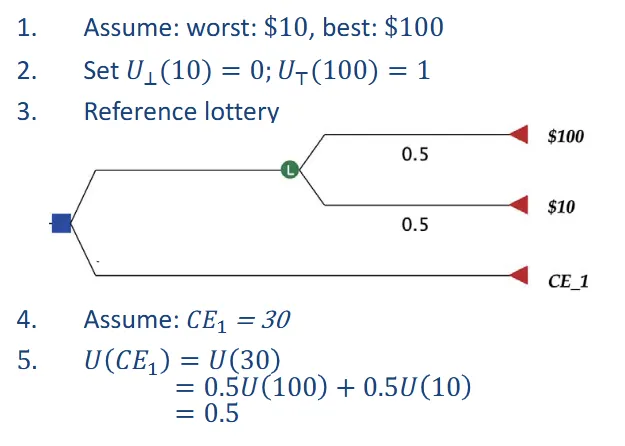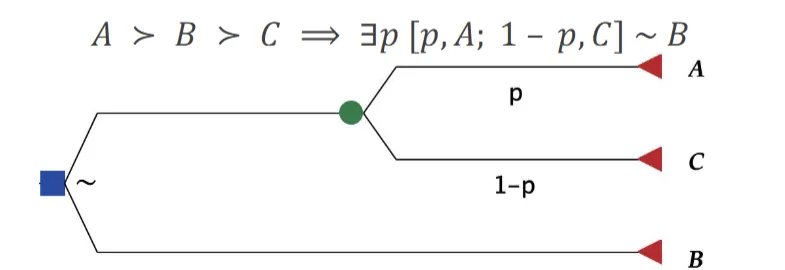470 words
2 minutes
[CS5446] Rational Decision Making
Decision Making under Uncertainty
- Decision Algorithm
- Input: a problem
- Output: a solution (policy) that specifies best action in each state wrt. values
- Types of decision theory
- Normative decision theory: describes how ideal, rational agents should behave
- Descriptive decision theory: describes how actual agents aka humans really behave
- Prescriptive decision theory: guidelines for agents to behave rationally
- environment: episodic, non-deterministic, partially observable
- try to maximize gain
- Decision Model:
- Actions:
- States: with probability of reaching:
- Transition model: probability that action in state reaches state
- Result:
- Probability of outcome state :
- Utility function: express the desirability of a state
- rational: to maximize the maximum expected utility (MEU)
- EU of action: average of utility value for all outcomes, weighted by probability
Axioms of Utility
- notation:
- : agent prefers A to B
- : agent is indifferent between A and B
- : agent prefers A over B or is indifferent between them
- 6 rules
- Orderability: must be one of , , or
- Transitivity: If =>
- Continuity: If => there exist some probability for which the agent will be indifferent between
- getting for sure
- getting the lottery that gets with probability and with probability
- Substitutability: If =>
- Monotonicity: If and =>
- Decomposibility:
- ,
NOTEAgent’s behavior doesn’t change if is subjected to an affine transformation
with
Utility function
- encode preferences
- translate “desirability” measures into utility units
Preference elicitation methods
How to get the utility?
- Probability equivalent
- set
- find s.t
- 最好的設成1,最差的設成0,如果選擇的機率等於選擇機率是最好的,機率是最差的,那麼選擇的utility是,
- Certainty Equivalent (CE)
- how much $ the lottery is equivalent to in your mind.

Expected Monetary Value (EMV)
- use money as decision objective
- doesn’t take into account risk attitude
- e.g. Win 1 million so far. A lottery: 50% loss all, 50% add 1.5 million. Play?
, Play!
Risk Attitude and Risk Premium
- Risk_premium = EMV - CE
- how much money are you willing to buy the lottery?
- Risk-averse: , (不想吃虧)
- Risk-seeking: , (賭下去就對了)
- Risk neutral: ,
[CS5446] Rational Decision Making
https://itsjeremyhsieh.github.io/posts/cs5446-3-rational-decision-making/
